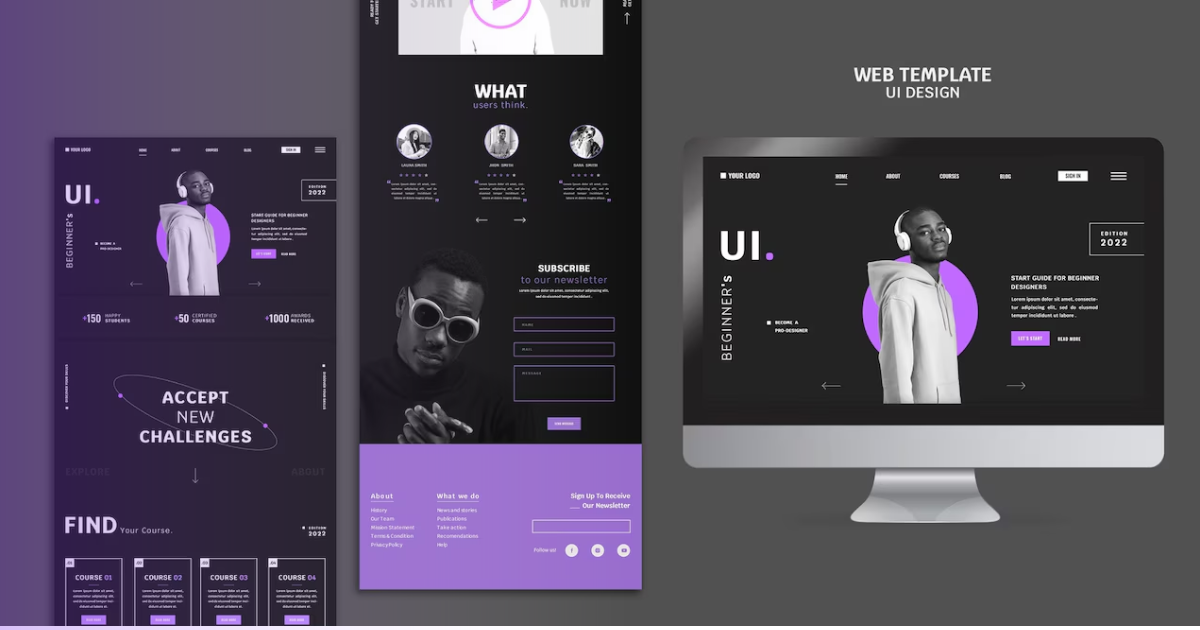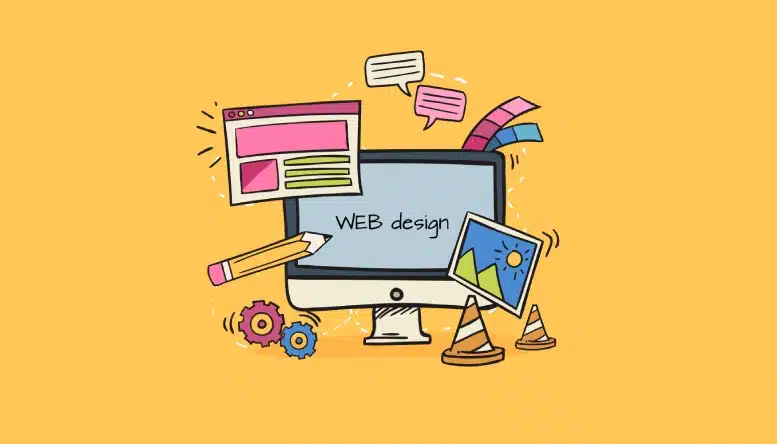Aligned Position Web Design: Building Beautiful and Functional Websites for Your Business
Aligned Position Web Design: Building Beautiful and Functional Websites for Your Business
Blog Article
The Ideal Types of Website Design to Boost User Experience and Involvement
In the ever-evolving landscape of digital interaction, the efficiency of Web design considerably affects individual experience and involvement. Various style methods, such as minimalist, responsive, and interactive layouts, each offer unique advantages that can provide to varied customer demands.
Minimal Website Design
As digital landscapes end up being increasingly cluttered, minimalist website design has arised as a powerful technique to boosting customer experience. This design ideology prioritizes simpleness, concentrating on crucial components while getting rid of unnecessary interruptions. By utilizing ample white room, simple navigation, and a limited shade combination, minimalist layout cultivates clearness and directs customer interest to essential web content.
The core concept of minimalist Web style is to create a smooth interaction for users. By lowering cognitive tons, users can promptly understand info without feeling bewildered. This direct approach not just improves use but additionally motivates engagement, as site visitors are more most likely to explore a website that is very easy and visually attractive to navigate.
Furthermore, minimal style often highlights typography and imagery, utilizing these aspects strategically to communicate messages effectively. This emphasis on essential elements can boost brand identification and create an unforgettable customer experience. Fundamentally, minimal Web design is not simply a fad; it is a thoughtful technique that recognizes the importance of user-centered style. By removing additional components, designers can produce an extra engaging, effective, and satisfying Web experience for all users.
Responsive Web Style
In today's varied electronic atmosphere, receptive website design has actually come to be crucial for creating a seamless user experience across a multitude of devices. As users access sites on smartphones, laptop computers, tablet computers, and desktops, the capacity of a web site to adjust its design and content to different display dimensions and resolutions is vital.
Responsive website design utilizes versatile grids, images, and CSS media queries to make certain that Web content is presented optimally, no matter the gadget used. This approach not just improves the visual allure of a web site however likewise significantly improves functionality. Users are more most likely to engage with a site that supplies a constant experience, as it eliminates the frustration of needing to zoom in or scroll exceedingly.
Additionally, online search engine, including Google, focus on mobile-friendly sites in search positions. By embracing receptive style, businesses can enhance their visibility and get to a broader target market. This strategy additionally simplifies web site maintenance, as a solitary version of the site can provide to all devices, lowering the need for numerous versions. In summary, receptive website design is an essential technique that improves customer experience, engagement, and general satisfaction.
Interactive Web Style
Receptive Web design prepares for improving customer experience, but interactive website design takes this an action better by involving customers in an extra dynamic way - Aligned Position Web Design. By including elements such as animations, clickable prototypes, and real-time comments, interactive Web layout astounds users, drawing them into a richer browsing experience
This method not only promotes interaction however likewise urges customers published here to explore content actively instead than passively eating it. Strategies such as gamification, where customers gain incentives for finishing jobs, can significantly enhance the time invested in a website and boost total satisfaction. Interactive functions can simplify complex details, making it extra satisfying and digestible.

Integrating interactive layout elements can likewise bring about higher conversion rates, as individuals are more likely to engage with a website that proactively involves them. Aligned Position Web Design. Ultimately, interactive Web layout changes user experiences into unforgettable trips, guaranteeing that site visitors return time and once again
Apartment Layout
Characterized by its minimalistic approach, flat design emphasizes simplicity and functionality, removing unnecessary elements and concentrating on important features. This design viewpoint prioritizes usability, ensuring that users can navigate user interfaces with convenience and effectiveness. By using a clean visual, flat design eliminates the clutter typically discovered in a lot more elaborate styles, thereby enhancing customer emphasis on material and performance.
The hallmark of level layout exists in its use of bold shades, basic typography, and geometric shapes. These elements add to an aesthetically attractive interface that is both modern-day and friendly. Additionally, level style fosters a feeling of clearness, allowing customers to determine important activities and info without interruption.
Additionally, level layout is particularly efficient in receptive Web design, as its simplicity converts well across various devices and display sizes. By focusing on essential functions, level layout not only meets individual requirements yet additionally encourages seamless interaction, making it a crucial part of reliable Web design techniques.
Adaptive Website Design
Flexible website design customizes the user experience by producing several taken care of formats customized to various display dimensions and tools. Unlike receptive layout, which fluidly readjusts a solitary format, flexible layout uses distinctive formats for details breakpoints, ensuring optimal discussion on numerous systems. This strategy permits developers to concentrate on the one-of-a-kind features of each tool, boosting usability by delivering specifically what customers require based upon their context.
Among her comment is here the main advantages of flexible website design is its ability to optimize lots times and efficiency. By serving tailored web content and photos that fit the individual's gadget, sites can minimize information use and enhance loading speeds. This is particularly useful for customers with slower connections or minimal information plans.

In addition, adaptive style facilitates a more consistent and controlled branding experience. Given that designers produce numerous formats, they can guarantee that the aesthetic components line up with the brand's identity throughout various platforms - Aligned Position Web Design. This results in a natural customer experience, enhancing interaction and advertising customer retention
Verdict
Finally, the combination of minimal, receptive, and interactive website go to my blog design principles substantially boosts user experience and engagement. Minimalist style promotes clearness and emphasis, while receptive layout makes certain adaptability across various devices, promoting ease of access. Interactive style mesmerizes individuals with dynamic aspects, motivating exploration and personalization. Collectively, these design approaches contribute to the creation of user-friendly environments that not only improve satisfaction but also drive greater conversion prices, emphasizing their essential relevance in modern Web style techniques.

Minimalist style fosters quality and emphasis, while receptive style guarantees versatility across various gadgets, promoting accessibility. Jointly, these design approaches contribute to the production of user-friendly atmospheres that not only improve satisfaction however also drive higher conversion rates, emphasizing their critical significance in modern Web style approaches.
Report this page